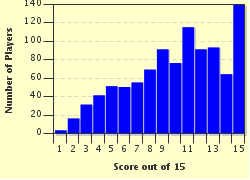Quiz Answer Key and Fun Facts
1. Estonia has more than 1400 islands within its borders. Hiiumaa, the second largest, was created by what event?
2. Most of the rivers in Estonia are quite short, with only ten being longer than 100km. Which river, whilst only 77km in length, is considered to be the largest because of the volume of water it carries?
3. In the 1990s, Estonia reported on a number of significant environmental challenges which it faced. Which of these was NOT one of them?
4. Estonia is not noted for its mountainous landscape. Its highest mountain is Suur Munamägi. What does the name Suur Munamägi mean in English?
5. Not only does Estonia have a large number of islands, but it also has a large number of lakes. Lake Peipsi-Pihkva is the largest lake in Estonia and it sits on the border with what other country?
6. As befits a Baltic State, the Baltic Sea lies to the west of Estonia. What body of water lies to the north of Estonia?
7. An Estonian folk tale describes this naturally occurring event as a glow from a celestial wedding. Which one is it?
8. Estonia re-emerged as an independent country when it regained freedom from the former Soviet Union in August 1991. In what year did Estonia first declare its independence?
9. Ethnic Estonians comprise the majority of the population of Estonia, but the country also has smaller populations of Russians, Ukrainians and Belorussians. Which small ethnic minority largely fled Estonia during World War II?
10. Estonia's capital city Tallinn is noted for the beauty of its medieval "Old Town". What honour was bestowed on Tallinn in 1997?
11. The city of Pärnu is known as Estonia's summer capital and is a major tourist destination. What attracts many of these tourists to Pärnu?
12. Estonian, the country's official language, is most closely related to what other language?
13. In a "Eurobarometer Poll" conducted in 2006, Estonia gained what interesting distinction out of the 25 European Union countries surveyed?
14. Estonia joined the European Union in 2004, but like a number of other EU countries did not adopt the Euro immediately. What was the currency of Estonia before the adoption of the Euro?
15. What building in Tallinn held the distinction of being the world's tallest from 1549 to 1625?
Source: Author
cazza2902
This quiz was reviewed by FunTrivia editor
Pagiedamon before going online.
Any errors found in FunTrivia content are routinely corrected through our feedback system.
